



Get new exclusive access to healthcare business reports & breaking news




The role of artificial intelligence in healthcare has been a huge talking point in recent months and there’s no sign of the adoption of this technology slowing down, well, ever really.
AI in healthcare has huge and wide reaching potential with everything from mobile coaching solutions to drug discovery falling under the umbrella of what can be achieved with machine learning.
That being said, many healthcare executives are still too shy when it comes to experimenting with AI due to privacy concerns, data integrity concerns or the unfortunate presence of various organizational silos making data sharing next to impossible. We’ve covered the main barriers to adopting AI in healthcare here.
However, the future of healthcare & the future of machine learning and artificial intelligence are deeply interconnected.
Following our comprehensive guides on Artificial Intelligence in Pharma and Blockchain in Healthcare, we’ve decided to take a closer look at how the healthcare industry is positively impacted by the rise in popularity of artificial intelligence.
But first, a definition:


Applications of Artificial Intelligence in healthcare are endless. That much we know.
We also know that we’ve only scratched the surface of what AI can do for healthcare. Which is both amazing and frightening at the same time.
At the highest level, here are some of the current technological applications of AI in healthcare you should know about (some will be explored further in the article while some use cases have gotten their own standalone articles on HealthcareWeekly already).
Medical diagnostics: the use of Artificial Intelligence to diagnose patients with specific diseases. Check out our roundup report from industry experts here. Also, a report AI platform was announced in March 2019 which is expected to help identify and anticipate cancer development.
Drug discovery: There are dozens of health and pharma companies currently leveraging Artificial Intelligence to help with drug discovery and improve the lengthy timelines and processes tied to discovering and taking drugs all the way to market. If this is something you’re interested in, check our report titled Pharma Industry in the Age of Artificial Intelligence: The Future is Bright.
Clinical Trials: Clinical Trials are, unfortunately, a real mess. Most clinical trials are managed offline with no integrated solutions that can track progress, data gathering and drug tria outcomes. Read about how Artificial Intelligence is reshaping clinical trials here. Also, you may also be interested in the Healthcare Weekly podcast episode with Robert Chu, CEO @ Embleema where we talk about how Embleema is using AI and blockchain to revolutionize clinical trials. If Blockchain in healthcare is your thing, you may also be interested in our Global “Blockchain in Healthcare” Report: the 2019 ultimate guide for every executive.
Pain management: This is still an emergent focus area in healthcare. As it turns out, by leveraging virtual reality combined with artificial intelligence, we can create simulated realities that can distract patients from the current source of their pain and even help with the opioid crisis. You can read more about how this works here. Another great example of where AI and VR meet is the Johnson and Johnson Reality Program which we’ve covered at length here. In short, J&J has created a simulated environment which used rules-based algorithms to train physicians in a simulated environment to get better at their job.
Improving patient outcomes: Patients outcomes can be improved through a wide variety of strategies and outcomes driven by artificial intelligence. To begin with, check our report on 10 ways Amazon’s Alexa is revolutionizing healthcare and our Healthcare Weekly Podcast with Helpsy’s CEO Sangeeta Agarwal. Helpsy has developed the first Artificial Intelligence nurse in the form of a chatbot which assists patients at every stage of the way in their battle with cancer.
These are just a few examples – and they’re only meant to quickly give you a flavor of what artificial intelligence in healthcare is all about. Let’s dig into more specific examples that every healthcare executive should be aware of in 2019.
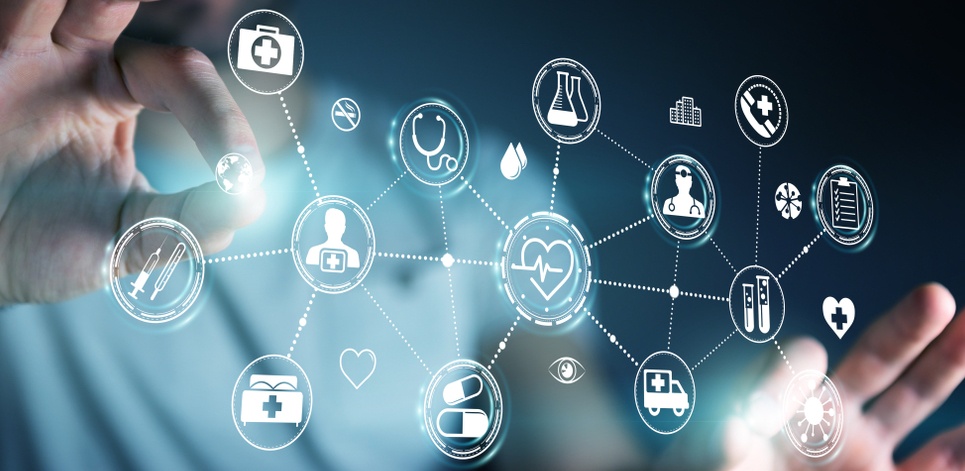

Let’s look at each of these amazing use-cases in more details.
AI in healthcare can prove useful within clinical decision support to help doctors make better decisions faster with pattern recognition of health complications that are registered far more accurately than by the human brain.
The time saved and the conditions diagnosed are vital in an industry where the time taken and decisions made can be life-altering for patients.
AI in healthcare is a great addition to the information management for both physician and patient. With patients getting to doctors faster, or not at all when telemedicine is employed, valuable time and money are saved, taking the strain off of healthcare professionals and increasing comfort of patients.
Doctors can also further their learning and increase their abilities within the job through AI-driven educational modules, further showing the information management capabilities of AI in healthcare.


There are 4 main machine learning initiatives within the top 5 pharmaceutical and biotechnology companies ranging from mobile coaching solutions and telemedicine to drug discovery and acquisitions.
Mobile coaching solutions come in the form of advising patients and improving treatment outcomes using real-time data collection. There’s a huge push in telemedicine in recent years too with companies employing AI for minor diagnosis within smartphone apps.
The ability to analyze large amounts of patient data to identify treatment options. The technology is able to identify treatment options through cloud-based systems able to process natural language.
Acquisitions continue to feed to innovation needs of both large and old biotech firms and with the development of AI, there’s plenty to offer up when it comes to company control.
With startups combining the world of AI and healthcare, there’s more choice for older and larger companies to acquire information, systems and even the people responsible for leaps and bounds in technology.
Drug discovery is another great place for AI to slip in with pharma companies able to include cutting-edge technology into the expensive and lengthy process of drug discovery.
The benefits of AI are instantly apparent with the focus on time-saving and pattern recognition upon testing and identification of new drugs.
In early-stage drug discovery, start-ups such as BenevolentAI or Verge Genomics are known to adopt algorithms which comb through portions of data for patterns too complex for humans to identify, saving both time and innovating in a way that we otherwise may not have been able to.
Insilico, another company with a heavy AI focus, has taken a different approach by using AI to design treatments not yet found in either nature of chemical libraries. An approach of using AI to simulate clinical trials before human trials have also been seen, leaving plenty of scope available for what AI can create.
For more information regarding how AI used in pharma, click here.
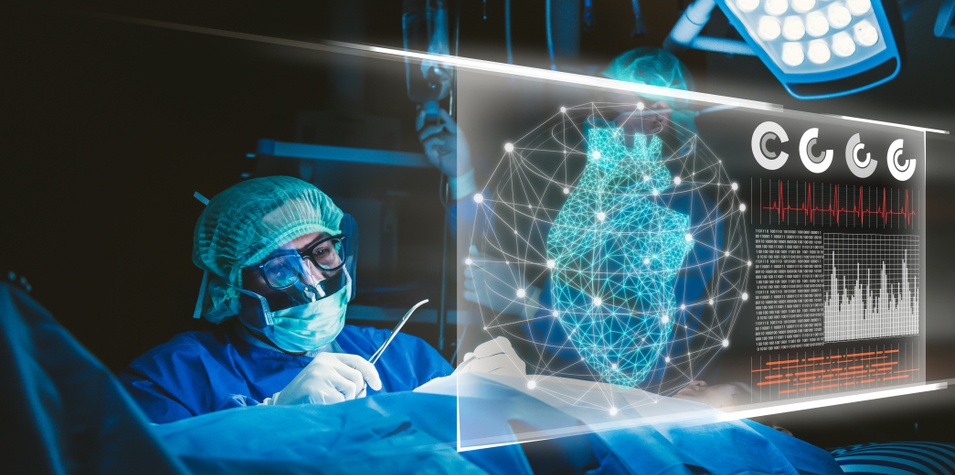

AI applications within the healthcare industry have the potential to create $150 billion in savings annually for the United States, a recent Accenture study estimates, by 2026. With AI in healthcare funding reading historic highs of $600m in equity funding (Q2’18) there are huge projected equity funding deals and equity deals as the years continue.
“We always overestimate the change that will occur in the next two years and underestimate the change that will occur in the next 10” – Bill Gates
Saliently, AI represents a significant opportunity for bottom line growth with the introduction of AI into the healthcare sector, with a combined expected 2026 value of $150bn:
The growth, however, is not unexpected and with the needs of the healthcare industry of which AI fits the gap – it’s a match made in heaven.
With the predicted 2026 value of robot-assisted surgery, virtual nursing assistants and administrative workflow assistance are expected to be valued at $40bn, $20bn and $18bn respectively, it’s the numbers that come with claims that are the most impressive.


Experiencing teething problems with the introduction of any new technology is not rare, but must be overcome for large scale adoption of AI to occur in the healthcare market.
Ultimately, the adoption of AI will attract stakeholders who will invest in AI and successful case studies need to be highlighted and presented for future encouragement. These case studies will require some early adopters of healthcare companies to kickstart the process.
Privacy within healthcare is, by nature, extremely sensitive and thus confidential.
For utmost confidence in the technology, systems should be put in place to ensure data privacy and protection from hackers. Unfortunately, data breaches continue to be a common occurrence as reported before when UW Medicine exposed 1 million patient records or with Missouri Medicaid.
But privacy concerns should not be a deterrent from adopting artificial intelligence in the healthcare space. In fact, last year we did a story on how Artificial Intelligence can actually help healthcare data security.
HIPAA and a number of other patient data laws are subject to the approval of governing organizations e.g. FDA to ensure that federal standards are maintained.
The sharing of data among a variety of databases poses challenges to the HIPAA compliance and care must be taken around these areas if future developments are to succeed. As companies developing software, therefore AI, are also required to comply with Hitrust rules, current rules are regulations are definitely known to be a barrier to AI adoption.
Deep learning, AI and machine learning do not have the ability to ask the question ‘why?’. As a result, the logic behind decisions is not justified, meaning mostly guesswork is required to how the decision was made.
How and why the decision has been made is key to the information within the treatment plan. With a lack of reasoning can come a lack of confidence within the decision, potentially rendering the technology as unreliable or untrustworthy by both patients and professionals.
When it comes to the stakeholders within the adoption of AI in healthcare, everyone, including patients, insurance companies, pharma companies, healthcare workers etc. are key.
Resistance to pursue the technology at any of the aforementioned levels would result in issues and potential failure to the incorporation of the technology in the macro. Stakeholdering is one of the top ten reasons why the healthcare industry as a whole is not innovating enough in 2019.
Diagnostic errors account for 60% of all medical errors and an estimated 40,000 to 80,000 deaths each year. As a result, artificial intelligence has been employed in a variety of different areas in a bid to reduce the toll and number of errors made by human judgement.
That said, there continues to be significant pushback when it comes to AI adoption in the clinical decision support process as scientists and medical personnel continue to approach the topic of AI with incredible caution.
With minimal operator training needed and design with common output formats that directly interface with other medical software and health record systems, the system is incredibly easy to use and simple to implement.
A clear output from the system allows 60 seconds to identify whether the exam quality was of sufficient quality, the patient is negative for referable DR or the patient has signs of referable DR. Following signs of referable DR, further action in the form of a human grader over-reading, teleconsultation and/or referral to an ophthalmologist may be suggested.
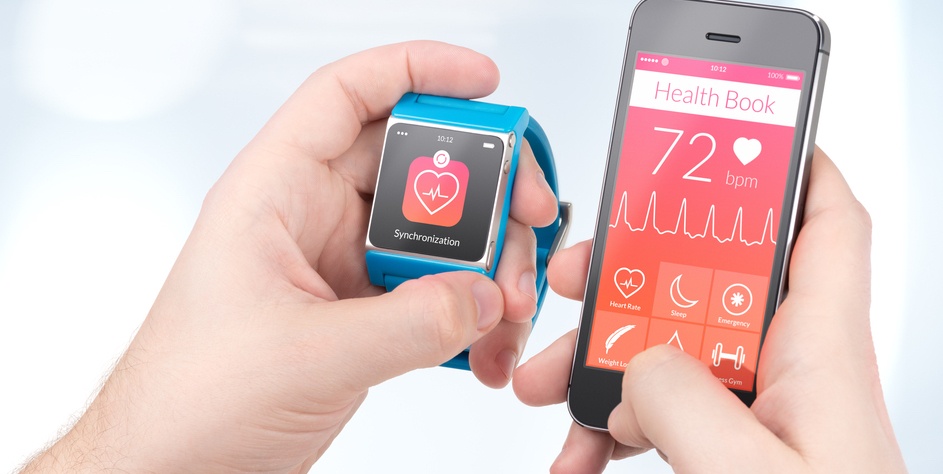

With the launch of the Apple Watch Series 4 and the new electrodes found within the gadget, it’s now possible for users to take an ECG directly from the wrist.
The Apple Watch Series 4 is the very first direct-to-consumer product that enables users to get a electrocardiogram directly from their wrist. The app that permits the readings provides vital data to physicians that may otherwise be missed. Rapid and skipped heartbeats are clocked and users will now receive a notification if an irregular heart rhythm (atrial fibrillation) is detected.
The number of accessories and add ons that technology companies are releasing for the Apple Watch is also beginning to crossover into the health industry. Companies, such as AliveCor have released custom straps that allow a clinical grade wearable ECG that replaces the original Apple Watch band. Although the strap may be rendered useless with the Series 4, for any of the earlier watches, the strap may prove a useful attachment to identify AF.
In addition, earlier this year, Omron Healthcare made the news when they deployed a new smart watch, called Omron HeartGuide. The watch can take a user’s blood pressure on the go while interpreting blood pressure data to provide actionable insights to users on a daily basis.
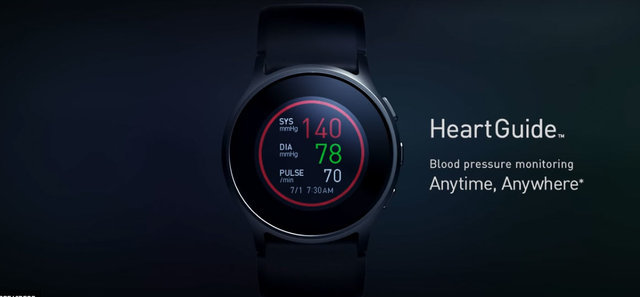

What all these examples have in common is how wearable technologies are slowly being repurposed or augmented to improve medical outcomes. And in all these examples, artificial intelligence is leveraged, ‘under the hood’, to collect, analyze and interpret massive amounts of data which can improve the quality of life of patients everywhere.
Late 2018 marked the announcement from Aidoc that it had been granted it’s U.S. FDA clearance of its first AI-based workflow solution, the diagnosis of bleeds on the brain.
The systems created work with radiologists to flag acute intracranial haemorrhage (ICH), or bleeds on the brain, in CT scans. With over 75 percent of all patient care involving cardiovascular diseases, the workload on radiologists is massive.
Integration into the health industry is simple and won’t require significant IT time and with additional hardware not required, it’s a simple resource that can be set up and maintained remotely. With a solution to assist workflow optimizations and increase the number of correct and high-quality scans, the demand for this AI-enabled technology is expected to be huge.
IDxhas developed an AI diagnostic system, IDx-DR, that autonomously analyzes images of the retina for signs of diabetic retinopathy. The software has received FDA approval to be used in the US.
1. Using a fundus camera, a trained operator captures two-color, 45° FOV images per eye
2. The images are transferred to the IDx-DR client on a local computer
3. The images are then submitted to the IDx-DR analysis system
4. Inside 60 seconds, IDx-DR provides an image quality or disease output and follow-up care instructions
5. If negative for mtmDR, the patient can be rescreened at a later date. If positive for mtmDR, refers the patient to eye care.
iCAD announced the launch of iReveal back in 2015 with the goal to monitor breast density via mammography to support accurate decisions in breast cancer screening.
With an estimated 40% of women in the US having dense breast tissue that can block the mammography from viewing potential cancerous tissue, the issue is huge and a solution was imperative.
The technology uses AI to assess breast density in order to identify patients that may experience reduced sensitivity to digital mammography due to dense breast tissue.
Ken Ferry, CEO of iCAD stated that “With iReveal, radiologists may be better able to identify women with dense breasts who experience decreased sensitivity to cancer detection with mammography.”
Mr. also Ferry added that “The increasing support for the reporting of breast density across the US, there is a significant opportunity to drive adoption of iReveal by existing users of the PowerLook AMP platform and with new customers, which represents an incremental $100 million market opportunity over the next few years. Longer-term, we plan to integrate the iReveal technology into our Tomosynthesis CAD product, which is the next large growth opportunity for our Cancer Detection business.”
Ultimately, the system remains at the forefront of breast cancer identification in women in the U.S. and with so many lives expected to be saved, I think everyone can agree what a fantastic use of AI it is.
QuantX is the first MRI workstation to provide a true computer-aided diagnosis, delivering an AI-based set of tools to help radiologists in assessment and characterization of breast abnormalities.
Using MR image data, QuantX uses a deep database of known outcomes and combines this with advanced machine learning and quantitative image analysis for real-time analytics during scans. A fast comprehensive display is seen with all processing on-demand in real-time with rapid display and reformatting of MPR, full MIPs, thin MIPs and subtractions.
A QI Score, a clinical metric correlated to the likelihood of malignancy is calculated with the images and regions of interest during scans. This is paired with a similar case compare, a tool which allows up to 45 similar cases from a reference library to be displayed for each analyzed lesion.
This information is passed on to radiologists to make accurate clinical decisions, decreasing the number of incorrect diagnoses in high-risk environments.
Coronary calcium scoring is a biomarker of coronary artery disease and quantification of this coronary calcification is a very strong predictor for cardiovascular events, including heart attacks or strokes.
A conventional coronary calcium scoring requires dedicated cardiac, ECG gated CT performed with and without contrast.
However, in recent times, a reliable derivation of coronary calcium score has been found algorithmically with the use of AI from low dose chest CT data. Zebra Medical’s scoring algorithm uses these standard, non-contrast Chest CTs and automatically calculates the Coronary Calcium Scores.
The tool is vital for the early detection of people at high risk of severe cardiovascular events that otherwise would not be aware of the risk without extensive testing.
San Francisco-based privately held company Bay Labs gained FDA approval in June 2018 for the fully automated and AI-based selection of the left ventricular ejection fraction (EF). Note that Healthcare Weekly has included Bay Labs is our list of the most promising healthcare startups to watch for in 2019.
With EF noted as the single most widely used metric of cardiac function, used as the basis for numerous clinical decisions, Bay Labs’ AI based EchoMD and AutoEF algorithms work to reduce the errors and minimise workflow that surrounds the industry. The algorithms eliminate the need to manually select views, choose the best clips, and manipulate them for quantification, which is often noted as a particularly time-consuming and highly variable process.
The algorithms automatically review all relevant information and digital clips from a patient’s echocardiography study and proceeds to rate accordingly with image quality as the focus criteria. What may be most impressive about Bay Labs’ artificial intelligence solution is the method that the system ‘learned’ clip selection in which over 4 million images were used to maximise algorithm success.
Ultimately, EchoMD and AutoEF will strive to maximise workflow efficiency while reducing the error in clinical decision making by helping physicians make correct choices.


Neural Analytics, a medical device company tackling brain health, announced a device for paramedic stroke diagnosis back in 2017, revolutionising the way that paramedics diagnose stroke victims.
Neural Analytic’ Lucid M1 Transcranial Doppler Ultrasound System tackles the issues of expensive and time-consuming stroke diagnosis for patients that suffer blood flow disorders.
This ultrasound system is designed for measuring cerebral blood flow velocities. This is no joke. Is successful, this technology will change how early doctors can detect stroke and could drastically improve patient outcomes.
The use of Transcranial Doppler (TCD), a type of ultrasound, allows for AI to assess the brain’s blood vessels from outside the body, preventing the need for more invasive tests. The AI software helps physicians detect stroke and other brain disorders caused by blood flow issues, increasing the capability of correct clinical decisions.
Icometrix is a company with the mission to transform patient care through imaging AI. With MRI brain interpretation used to decrease error in clinical diagnosis, the company is well on the way to changing the way that abnormalities are discovered within the brain.
The system developed objectively quantifies brain white matter abnormalities in patients, decreasing the amount of time taken, increasing the accuracy and improving patient care for those with brain issues. Changes in the brain are confidently evaluated with a focus on the structure with utmost accuracy. The system allows an increased sensitivity and augmented detection, ultimately leading to improved healthcare.
With quantification of clinically relevant brain structures for individual patients and a range of identifiable neurological disorders, there’s plenty that AI had to offer in the space.
The OsteoDetect software is an AI based detection/diagnostic software that utilises intelligent algorithms that analyze two-dimensional X-rays.
The software searches for damage in the bone, specifically a common wrist fracture called the distal radius fracture. The software utilises the machine learning techniques to identify these problem areas and mark the location of the fracture on the image, assisting the physician with identification of a break.
OsteoDetect is designed for use in a variety of different situations including primary care, emergency medicine, urgent care and specialty care, such as orthopedics. Although the software is not intended to replace a clinician’s review and independent thoughts and judgement of a radiograph, it is designed to assist.
Powered by AI, Viz.ai allows for synchronized stroke care to improve access to life-saving therapies.
Data-driven artificial intelligence from Viz.ai automatically detects a large vessel occlusion and synchronizes care by alerting Erlanger Health System doctors. With a 24/7 synchronized team collaboration, a suite of AI powered products detects and alerts stroke teams when large vessel occlusions are suspected, vital with such time-sensitive issues.
Stroke teams can then consult in real time via a mobile interface, allowing a focus on fast treatment decisions that not only save brains, but lives too.
Medical imaging company Arterys has been demonstrating its wide range of AI powered imaging services and solutions for a number of years with liver and lung cancer MRI and CT diagnosis as well as MRI heart interpretation, covering huge areas of potential health scares.
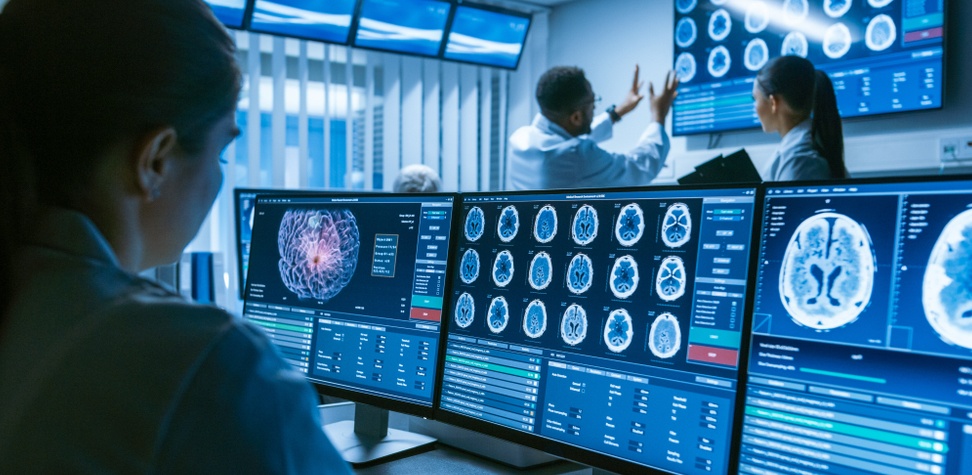

Arterys Lung AI similarly provides improved tracking of lung nodules and clinical management of lung cancer in patients. The solution yields more accurate measurements than other available solutions while the automated longitudinal tracking assists clinicians with better management of the nodules. Automatic reporting capabilities are also used to deliver summaries and findings from the AI, demonstrating relevant quantitative information, images and comments.
Arterys Cardio AIMR not only uses AI and deep learning, but allows cloud computing to step into the mix to automate the analysis of cardiac magnetic resonance (MR) images. The solution allows for tedious manual tasks to be avoided, effectively managing workflow and quickly and easily identifying and determining treatment for track heart problems.
Ultimately, Arterys’ work in the field is vital to improving workflow management and developing systems that better clinical decisions in both speed and accuracy.
Mayo Clinic, an organization focused on the development of patient care and health technology, has developed an artificial intelligence based solution to identify precancerous changes in a woman’s cervix.
The machine learning-based solution uses an algorithm taught with the use of over 60,000 cervical images from the National Cancer Institute (NCI) for ease of identification of precancerous signs. Researchers state that the algorithm functions at a much higher success rate than a trained human expert with 91% compared to 69% of correctly identified signs.
With the company continuously updating the algorithm, we can expect to see an even higher percentage of correct clinical decisions in the very near future. It’s an exciting time for all involved within the industry.
Interestingly enough, in March 2019, Mayo Clinic and Leidos announced building a tech accelerator on Mayo Clinic’s campus in Jacksonville within the Life Sciences Incubator campus. The campus is a med-tech hub designated to advance new ideas and products from the research lab, through product development, for the improvement of human health and well-being which includes various Artificial Intelligence initiatives.
DeepMind, partnered with London’s Moorfield Eye Hospital, announced an AI solution to spot the signs of eye disease as effectively as world-leading doctors and experts.
The British company has leveraged machine learning with data from over 15,000 patients, allowing the algorithm to spot eye disease from optical coherence tomography (OCT). The solution removes a large chunk of time that often requires expert analysis to interpret, but with AI, we see as accurate diagnosis automatically.
Although the technology is in the early stages, it is expected that it will evolve until doctors can fully prioritize those in desperate need of time sensitive treatment, saving the sight of patients.


Knowledge management for doctors:
Johnson and Johnson are one of the pioneers of a VR module to train doctors with VR based headsets used to allow hands-on practice for medical professionals, reducing real-life mistakes and surgery complications.
By focusing on three unique VR training modules for orthopaedic surgery, total hip, total knee replacement and hip fracture, the VR experience has led to praise throughout the medical community.
In a study performed in 2017, of the 100+ orthopedic surgeons that trialled the experience, almost 80% of the surgeons stated that they would love to frequently use the technology for their own training.
The software provides a safe and convenient learning experience where doctors are able to receive instant feedback and make better progress with their practice, but the possibilities are endless.
Knowledge management for patients:
On the patient side, the biggest use cases are healthbots and self-assist apps with digital doctors taking over the space once ruled by human interaction.
The use of a smartphone or tablet app for diagnosis was once a thing of science-fiction and dreams, but AI based applications are slowly taking over as the most popular healthcare sources for patients.
With 24-hour availability and coverage for doctors in rural areas, not only is the app great for maximising patient comfort, but for minimising the time taken to diagnose. With fewer people seeing doctors in person, this reduces the physical strain on already struggling hospitals. That means less wait times throughout, less congestion and better diagnosis from doctors with more time to focus on serious issues.
There’s plenty to choose from, with the top 12 health chatbots rated in no particular order as:
Self detection of skin cancer
1 in 5 people get skin cancer at some point during their lifetime, but many of us struggle to get to a doctor to get any abnormalities checked out.
SkinVision helps people check their own skin for signs of skin cancer with the use of nothing more than a smartphone. The downloadable app allows for instant results in the palm of you hand with a photo of a skin spot being all that is needed to receive your risk indicator before getting free advice from in-house dermatologists.
With over 1.1m users and over 3.5m pictures taken, the app could be showing the start of something huge in the form of self diagnosis of serious medical conditions.